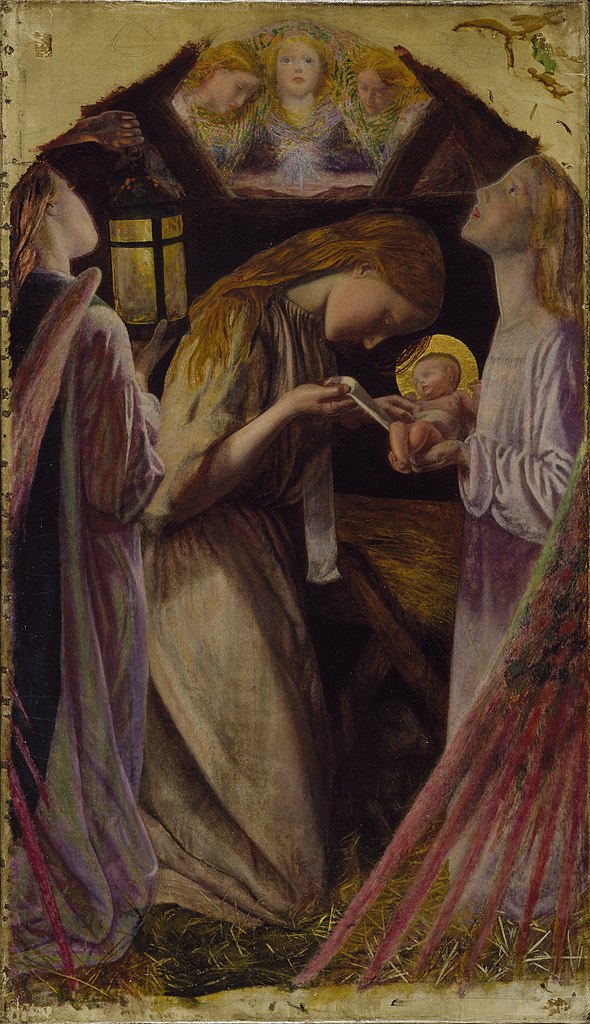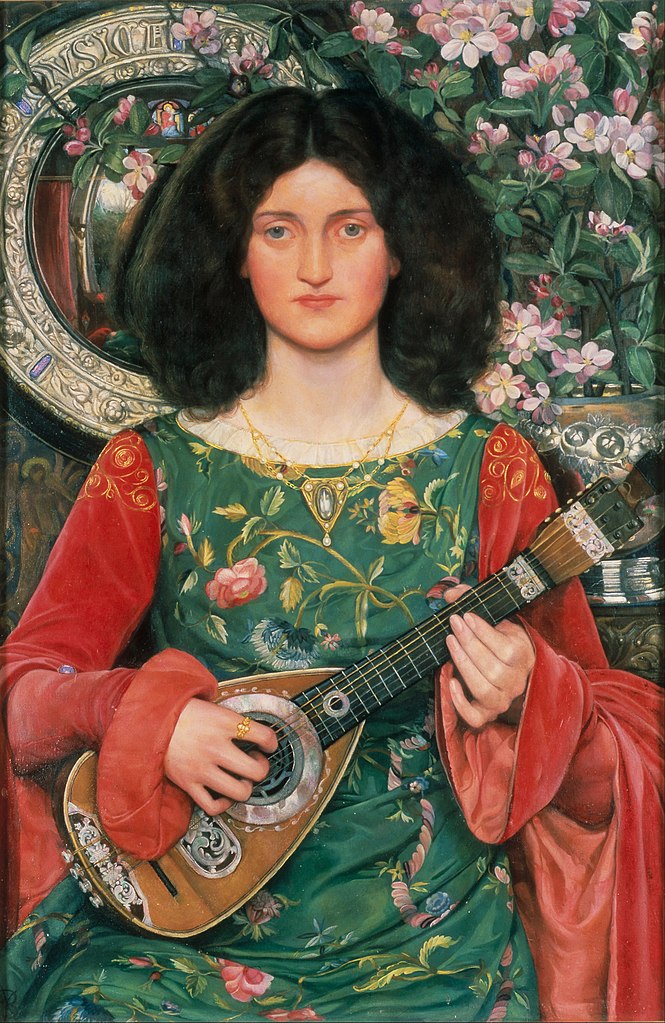Birmingham and the Pre-Raphaelites
Birmingham, the UK’s second city, has some claim to be the center of Pre-Raphaelitism. It was the birthplace of Edward Burne-Jones (1833–1898), who, along with William Morris (1834–1896), provided spectacular stained glass for the city’s cathedral. Its School of Art, founded to teach design in 1843, became the UK’s first public art school in 1885. Promoting Arts and Crafts principles, it taught some of the leading figures of late Pre-Raphaelitism. Birmingham’s manufacturers produced ceramics, jewelry, and metalwork, which upheld the ideals of craftsmanship and beauty that the movement championed.
The city’s Victorian businessmen and industrialists were some of the first significant collectors of Pre-Raphaelite painting. Most importantly, they supported the city’s Art Gallery, which opened in its present form in 1885. The gallery has amassed a collection of over 2,000 late Victorian works and objects. If you like Pre-Raphaelitism, it is the place to go.
Pre-Raphaelite Radicals–Where It All Began
Victorian Radicals starts with the difficult task of proving why these painters were radical. The opening display, set against a vivid blue, heightens the color intensity of works like William Holman Hunt’s (1827–1910) Valentine Rescuing Sylvia from Proteus, which features some of the most beautiful images in 19th-century painting. Yet Charles Dickens, writing in 1850, declared works by the Pre-Raphaelite Brotherhood (PRB) to be the ‘lowest depths of what is mean, odious, repulsive, and revolting.’ Despite good captioning, it is tough to look at John Everett Millais‘ The Blind Girl or Arthur Hughes’ (1832–1915) The Long Engagement and see what he was getting at.
The PRB, the 1848 group of bright young students that included Dante Gabriel Rossetti (1828–1882) as well as Hunt and Millais, wanted to take art back to basics: pure color, precisely observed detail, meaningful subjects. The first section of the exhibition demonstrates all those qualities in breathtaking style. And occasionally, the radicalism creeps in. Hughes’ Nativity, with its abstracted angel wings and claustrophobia, is an entirely new take on an old subject. Henry Wallis’ 1857 Stonebreaker is a furious indictment of poverty for all its lush beauty.
The Brotherhood Expands
Although the PRB itself was short-lived, its influence was immediate and lasting. The following sections of the exhibition examine this by looking at graphic art and sculpture, notably a newly acquired portrait relief of Millais by Alexander Munro, and new followers: the Sandys siblings, Emma (1841–1877), Frederick (1829–1904) and Simeon Solomon (1840–1905). Less well-represented, although thankfully introduced as ‘artist’ rather than muse or model, is Elizabeth Siddal (1829–1862).
The changing work of the members themselves is covered, particularly Rossetti’s shift in focus to deeply personal, aesthetic images of women, including a stunning pastel of Fanny Cornforth, Woman with a Fan, from 1870, which has an ethereal softness. There are gaps; for instance, Millais and Hunt’s careers are not followed through, but it is a minor criticism. What is noticeable is how insular the work quickly becomes: landscapes and social commentary give way to Medievalism and fantasy.
William Morris
The exhibition covers three generations of artists, and the central section introduces the second of these, based around the figures of William Morris and his close friend and associate Edward Burne-Jones. Connected to the PRB through their collaboration on murals for the Oxford Union, they took the movement in new directions.
On the one hand, Morris was a romantic socialist who championed the ideal of the Medieval craftsman, working in a society that appreciated skill and individual labor rather than factory-driven mass production. While the exhibition has good examples of Morris’ designs and is particularly strong in its use of light-box stained glass, the Arts and Crafts Movement seems too big an area to cover successfully. There are dresses, jewelry, and even a carpet, but they are displayed as individual objects rather than part of a coherent narrative.
However, Victorian Radicals does showcase the exquisite, labor-of-love book-making of Morris and his circle. Examples of Edward Moxon’s 1857 edition of Tennyson’s Poems and the Kelmscott Press’ Chaucer (1896) are accompanied by original drawings, like Rossetti’s St Cecilia: tiny, dense, and intensely erotic. An uncut woodblock of one of Burne-Jones’ illustrations gives a sense of the painstaking and time-consuming process.
Edward Burne-Jones
Although Edward Burne-Jones was a designer for Morris and Co. and produced his own pieces, like the oversized and luridly gilded Garden of the Hesperides Cassone (1888), his art became increasingly detached from the real world. The Pygmalion series tells a cautionary tale of a sculptor in love with his creation. A complete series is shown with room to breathe on a wall of rich, deep pink and bolstered by some tenderly soft preliminary sketches.
An unsettling quality is never far from Burne-Jones’ work, however, and there is an almost surreal weirdness to his late The Wizard, which seems more attuned to fin-de-siecle symbolism than the sunlit nature and exuberance of early Pre-Raphaelitism.
The Last Pre-Raphaelites
The exhibition’s final section takes the story into the twentieth century with artists and designers mainly from, or trained in, Birmingham. There seems to be a deliberate attempt at celebration: a pale pepperminty wall coloring lightens the mood, and these are works of joyful color and pattern.
However, it is an uneven selection: Kate Bunce (1856–1927) and Joseph Southall (1861–1944) deserve to be better known, but there is an insipid version of Beauty and the Beast by John Dickson Batten. A few judicious loans to include, say, Evelyn de Morgan (1855–1919) or Eleanor Fortescue-Brickdale (1872–1945) would have helped here.
It is easy to dismiss these artists as head-in-the-sand nostalgists, painting scenes of knights, working in tempera, and determinedly ignoring modernity. Yet, if you look at their curving floral patterns and surface decoration, they display clear links to Art Nouveau and foreshadow the quirky Englishness of later artists like Stanley Spencer.
Victorian Radicals tries hard to make Pre-Raphaelitism and the Arts and Crafts movement forward-thinking, radical and relevant. It does not always succeed, but it reveals art and design of beauty, skill, and integrity: art to gladden the soul, and design you wish to have in your life.
And suppose you look at works like Ford Madox Brown’s The Last of England. In that case, you see an innovative, almost fish-lens composition, a challenging social commentary, striking use of newly invented colors, and a narrative of migration and diaspora that feels relevant today.
Victorian Radicals is at the Birmingham Museum and Art Gallery until October 31, 2024, Wednesday through Sunday. If you can’t go in person, there is an excellent catalog.














